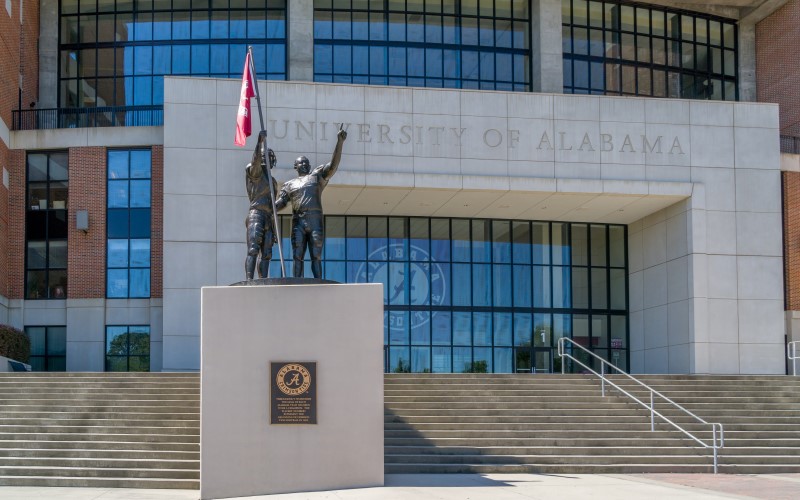Bryant Denny Stadium is more than just a football venue; it symbolizes tradition, excellence, and the unyielding spirit of the Alabama Crimson Tide. Nestled in the heart of the University of Alabama’s campus in Tuscaloosa, this iconic stadium has witnessed nearly a century of football history.
A Storied Beginning
Bryant-Denny Stadium opened its doors in 1929, initially known as Denny Stadium, in honor of George H. Denny, the university’s president at the time. With a seating capacity of just 12,000, the stadium was relatively modest. It was intended to serve as a home field for the Crimson Tide during an era when college football was beginning to capture the nation’s attention. The stadium’s inaugural game saw Alabama crush Mississippi College 55-0, setting the stage for the stadium’s role in the team’s future successes.
Transformations and Expansions
The transformation of Denny Stadium into the modern Bryant-Denny Stadium we know today began with a series of expansions driven by the growing popularity of Alabama football. The first significant expansion in 1937 added seats on the east sideline, doubling the stadium’s capacity to 24,000. Future expansions grew to 43,000 by 1961, and Alabama’s football program flourished. The demand for seating grew, and by the early 2000s, the capacity rose to its current total of 100,077.
Modern Era and Honors
The most significant upgrades to Bryant-Denny Stadium came in the 2000s, as the university aimed to enhance the fan experience and further solidify the stadium’s status as one of the premier venues in college football. The north endzone expansion in 2006 added premium seating and skyboxes, while the university upgraded the exterior façade to a classic brick design that matched the university’s architectural style. The “Walk of Champions,” featuring statues of Alabama’s national championship coaches, was also introduced, creating a new game-day tradition for fans and players alike.
In 2010, the university expanded the south endzone, bringing the stadium’s capacity to a record 101,821 seats, and added a two-level South Zone club, more skyboxes, and extensive video boards in each corner of the stadium. With these enhancements, Bryant-Denny Stadium secured its place as one of college football’s largest and most technologically advanced stadiums.
The Legacy Continues
Today, Bryant-Denny Stadium stands as a monument to Alabama football’s rich history and enduring spirit. The Crimson Tide has made this stadium one of the most formidable venues in college sports. Over 100,000 fans pack the stands every fall, creating an electrifying atmosphere that makes Bryant-Denny a tough place for visiting teams to complete.
Beyond college football, the stadium also plays a role in the broader community. Since 2009, Bryant-Denny has alternated with Jordan-Hare Stadium, home of the Auburn Tigers, in hosting the Super 7 Alabama High School State Championship Games. This tradition allows high school athletes to play in a major college football stadium, adding another layer of significance to the venue.
Bryant-Denny Stadium is more than just a building; it is a living piece of Alabama’s history. As the Crimson Tide continues to add to its legacy, the stadium will remain at the center of it all, a symbol of excellence and tradition that resonates with fans nationwide.

